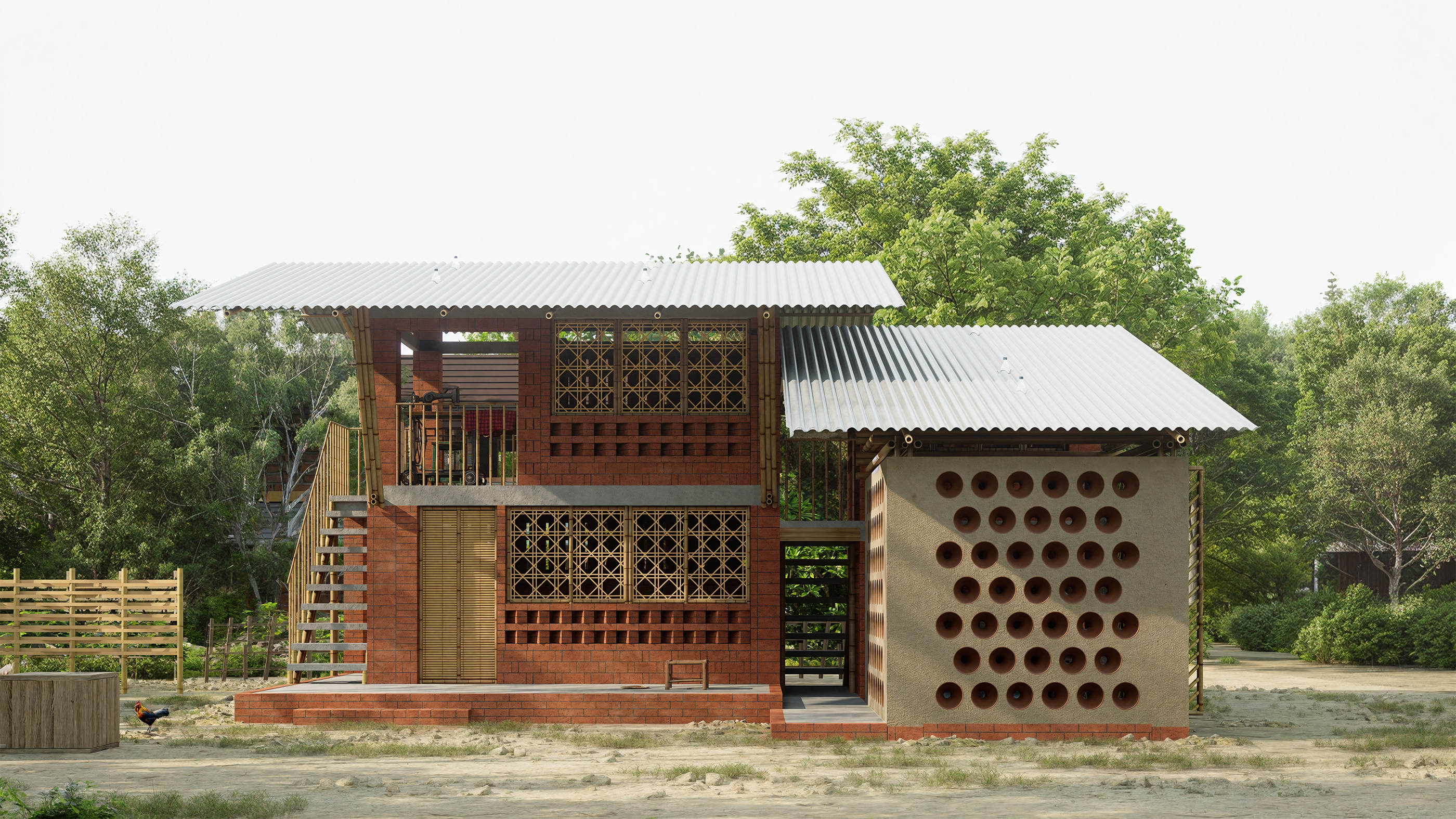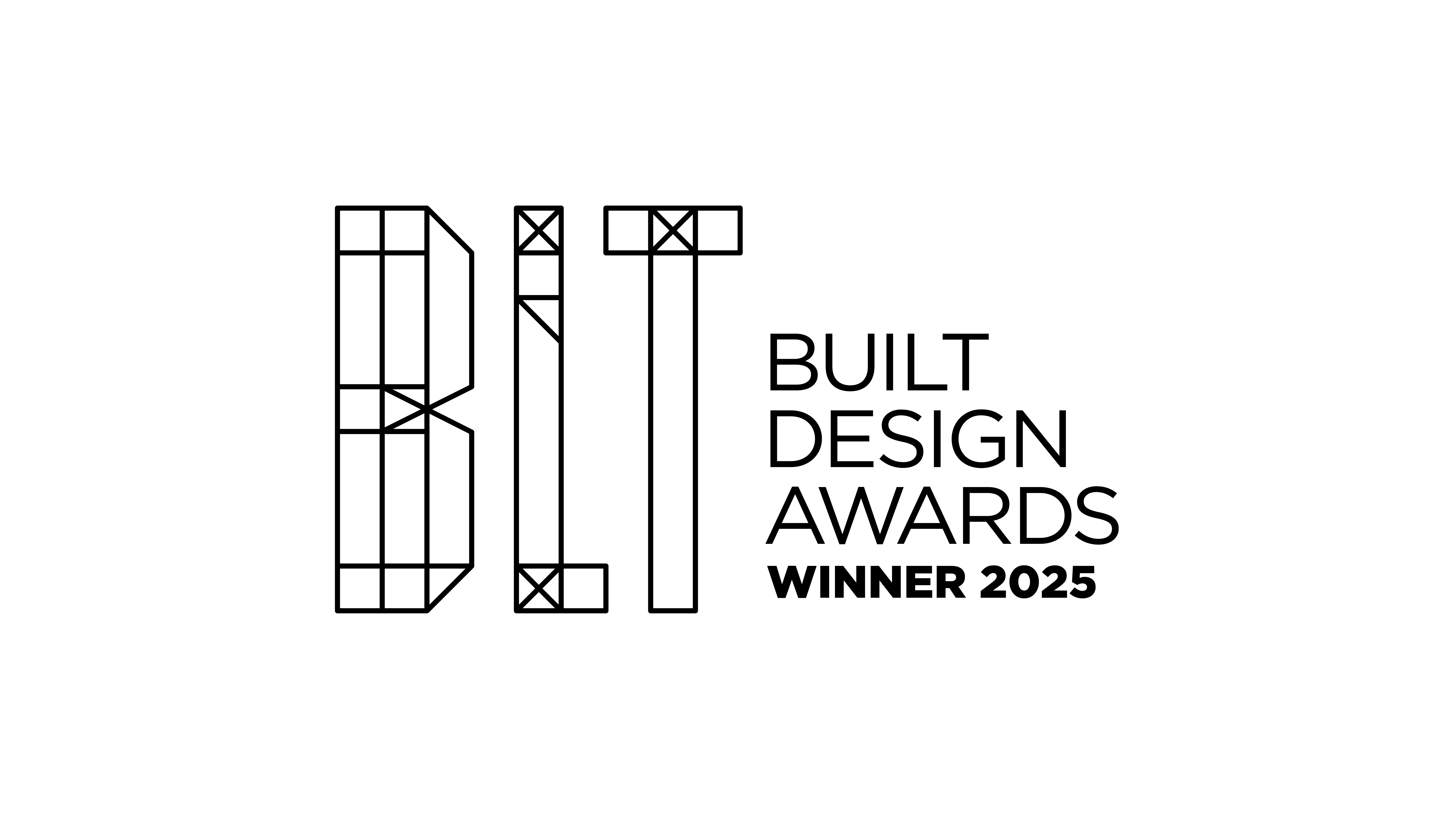
The $2,500 Vernacular Home is a sustainable house designed in Para Dash, the village of Modonpur, Bangladesh. Built with a budget under $2,500, including labor and materials, it uses only local resources: mud, straw, bamboo, bricks, and tin sheets. The home serves a family of four—parents and their son with his wife. To address Bangladesh’s hot climate and long monsoon season, the design uses a raised veranda, steeply pitched roofs for rain runoff, and a layout that ensures every room catches the breeze. Varying window heights on windward and leeward sides enhance ventilation. Clay pots from a nearby village are embedded in the tea house façade to cool air through airflow compression. The house includes two bedrooms, a kitchen, toilet, cow sheds, and a future child’s room. A weaving area for the daughter-in-law sits on the upper-level balcony, allowing her to stay connected to the family while working. The parents' tea house and shop are placed along the village road for accessibility and courtyard privacy. Due to limited electricity, “liter bottles of light” are used in the roof to brighten interiors. Rooted in local knowledge, the design reflects true vernacular sustainability.
Bio Xinyun Li is an architect and a graduate of the Harvard University Graduate School of Design. She is currently practicing architectural design in New York. Architecture is a fascinating discipline - one that encourages intuitive exploration while embracing rational thought. It integrates technological advancements and reflects the evolution of its time. Architecture is a form of expression - an emotional expression. It quietly conveys the architect's sentiments toward the users and the site, while also expressing the building’s own relationship with its surroundings and the city.

